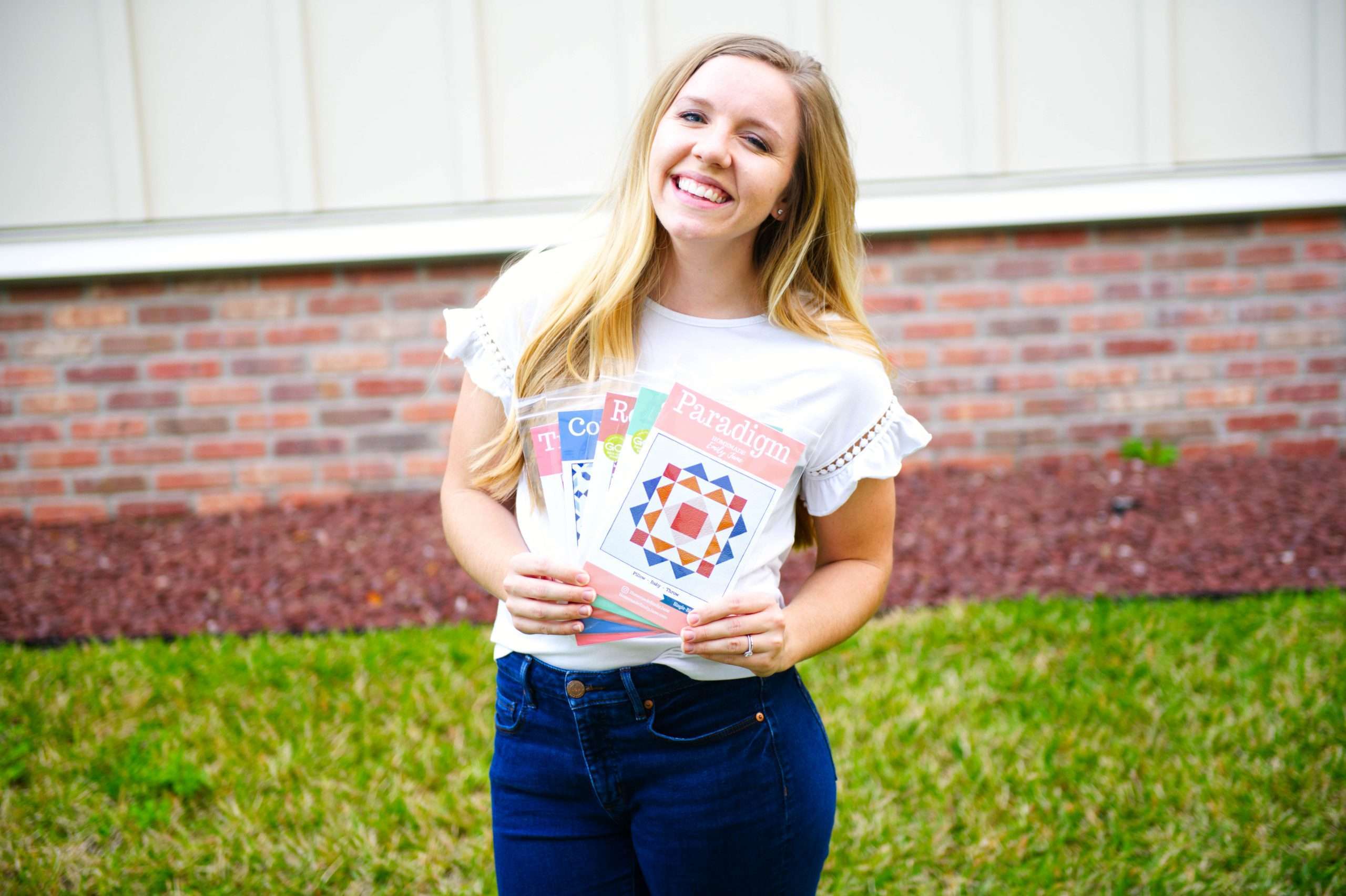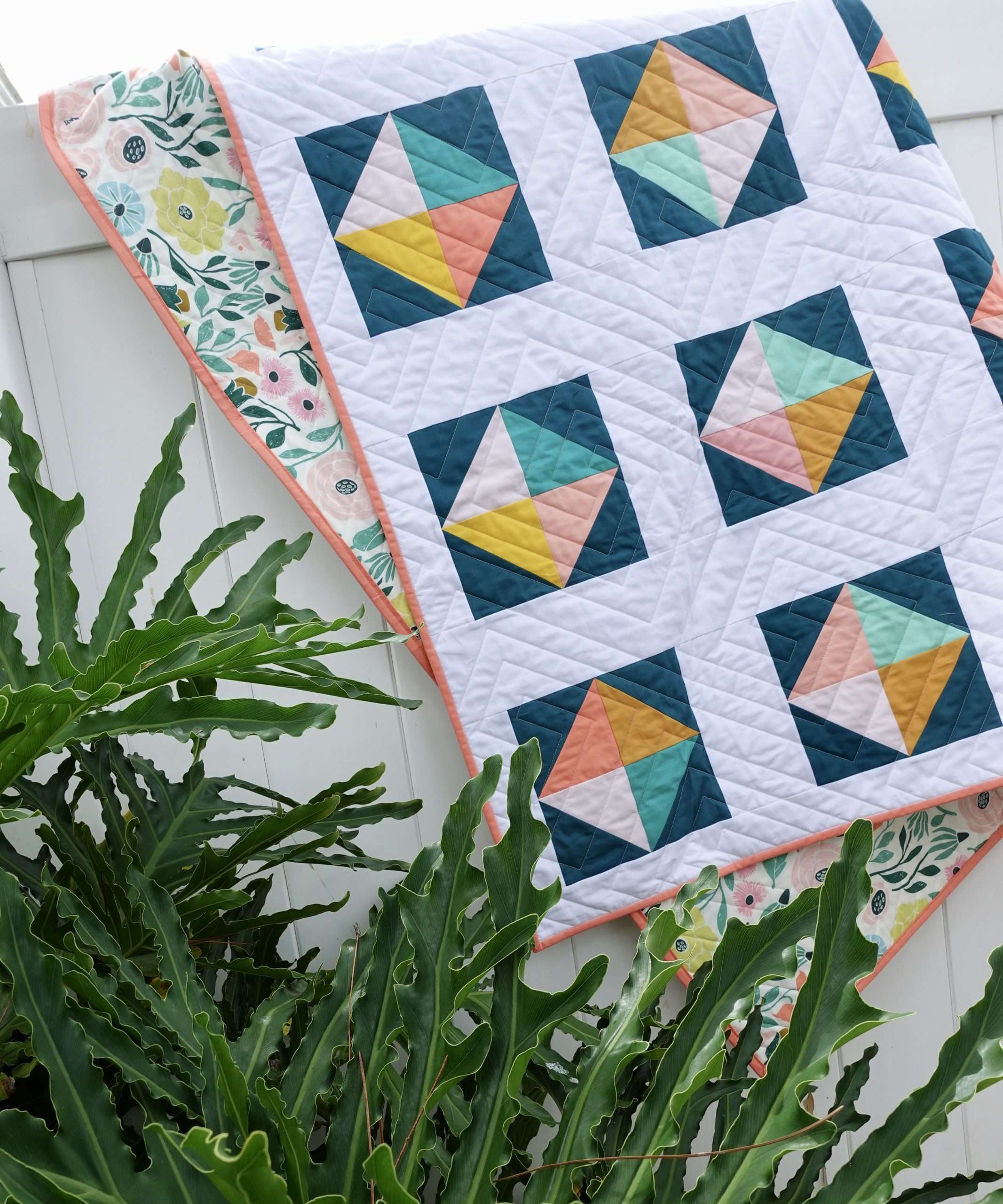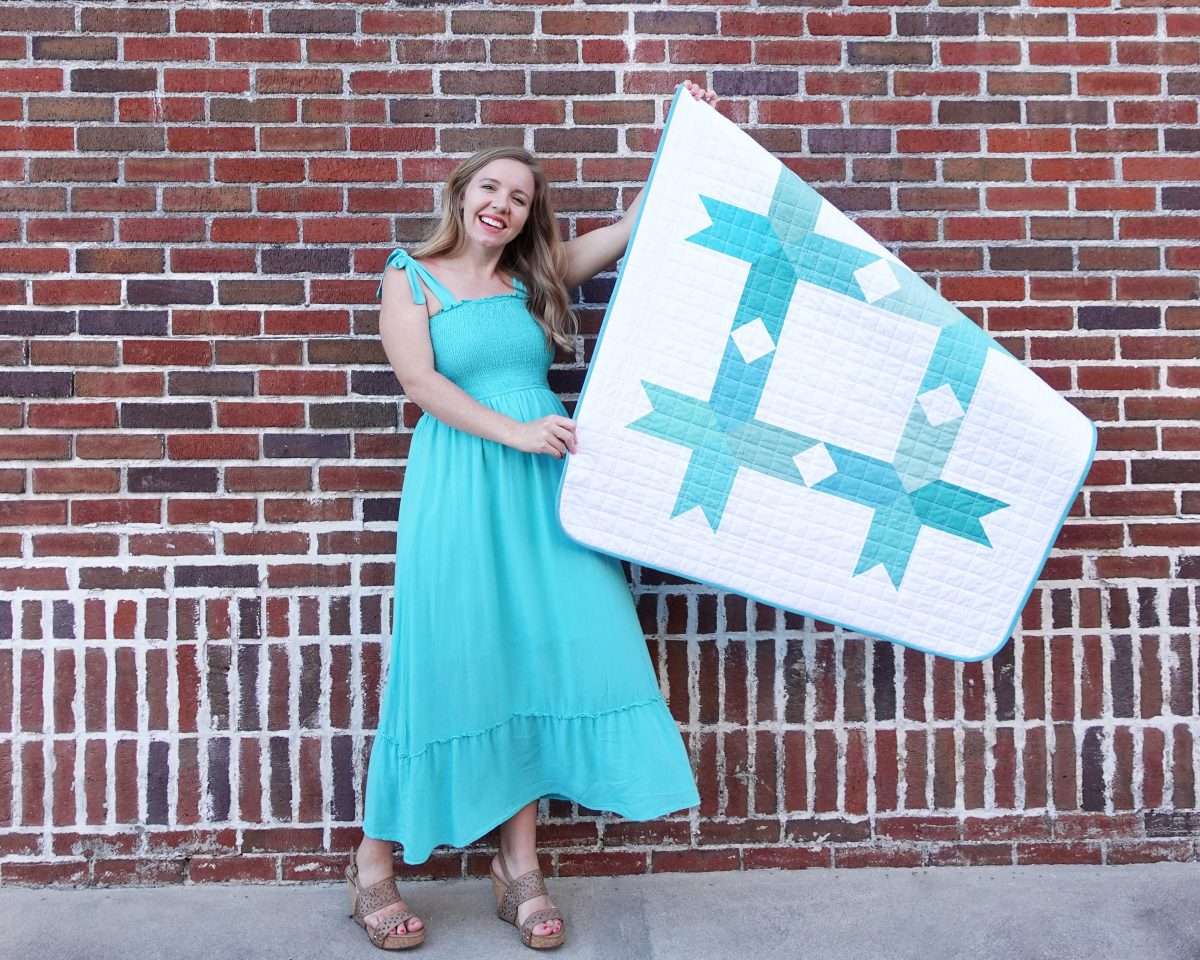Learn the Basics of English Paper Piecing (EPP)
English Paper Piecing, called EPP for short, is a hand sewing technique used in quilting. It features using shapes of card stock to keep the fabric in the correct sizes and shapes.
If this is your first time trying English Paper Piecing, this video might help you see the two main types of stitches you can use. I’d suggest you try out both and see which way you prefer.
This article contains affiliate links; these links allow me to make a small commission on purchases made after clicking on the links, but does not alter the shopping experience for you!

English Paper Piecing Supplies
Paper: Typically made from card stock, the EPP papers are what give the fabric structure when you are sewing them together. You can purchase precut papers like these or these, or you can make them yourself using a variety of different methods. I prefer to use my AccuQuilt cutting machine as much as possible, and I share more about it below. Fiskars also makes a neat hole-punch cutting option like this one.
Fabric: The fabric pieces for EPP should be 1/4″ or 3/8″ larger than your papers on all sides. You can cut custom shapes of fabric using an Add A Quarter ruler, or you can use the AccuQuilt Qube option, which I share more about below.
Glue stick: I prefer using a Sewline glue stick like this one, but you can also easily use an Elmer’s glue stick for attaching the fabric to your papers.
Thread: My favorite thread to use for English Paper Piecing is Decobob 80 wt. from Wonderfil. This thread is cottonized polyester, which means it is strong like polyester but behaves a bit like cotton while you are working with it. I find that it is nearly invisible, which is perfect for EPP.
Needles: I prefer to use small hand sewing needles like these.
You may also want to use SewTites or Wonder Clips to help keep your pieces in line while you are sewing, or even masking tape for the flat back stitch as discussed below!

Cutting English Paper Pieces with AccuQuilt
The moment I heard about AccuQuilt coming out with an EPP Qube I knew I needed it! The AccuQuilt EPP Qube features 4 shapes that all work together to make tons of different block variations! The papers each have 1″ sides, and I LOVE how the Qube includes dies for cutting both the papers and the fabrics.

If you’re using an AccuQuilt to cut your papers, I prefer using 65 wt card stock and I cut 2 layers at a time. You could also use recycled junk-mail card stock too as a way to reuse something that you might already have!
I find it helpful to determine the layout I want and then mark each piece to let me know what fabric it will get. In this project I used “P” for pink/purple and “G” for Gold.

Basting with a Glue Stick
When I first learned how to English Paper Piece, I learned how to baste using a needle and thread around the edges of a hexagon. It was fairly easy to do, but I’ve found I like using a glue stick better since it can be used around different shapes and around curves easily too!

Glue basting involves drawing a very thin line of glue on the back of your paper piece about 1/8″ away from the edge. You want it close enough that the fabric will grab it, but not too close that it makes it tough to sew later on. A little glue goes a long way, so try to put just enough!

Two EPP Stitches to Try Out
There are two very common stitches people use when sewing EPP blocks together. The whipstitch and the flat back stitch. Watch the video at the top of this post to see them both in action.
How to Sew a Whip Stitch
Sewing the whip stitch involves placing your two fabric pieces right sides together and pinching them together. This is where Wonderclips or Sew Tites can come in really handy.
Carefully insert your needle in through just a few threads of fabric on both pieces, and tie a small knot. Stitch along the entire seam and end with another knot.
How to Sew a Flat Back Stitch
Flat Back stitches are ideal when you want your sewing to be completely invisible or if you are sewing around curves. You begin by placing your two pieces face up how you want them arranged. Place a piece of masking tape over the space the seam will go, on the right side of the fabrics. The tape holds the pieces in place while you sew. Flip the unit over so you are looking at the back, and so that the piece is flat. Beginning with a knot, sew along the seam from one piece of fabric to the other.
Finishing your English Paper Piecing Project
Once your seams are sewn, the next step is to carefully remove the papers and press your seams nice and flat. I also love to use Best Press while pressing to give the edges a bit more crispiness.

I made fabric coasters out of some little EPP Blocks! You can find the full tutorial for making coasters over on the AccuQuilt Blog!


Want more AccuQuilt inspiration & tutorials? Check out these great articles:
- How to Make Perfect Half Square Triangles
- Reverberate Quilt Pattern
- How to use an AccuQuilt Go!
- AccuQuilt FAQs
- Solitaire Quilt Pattern
- String Quilt Block Tutorial
- 12 Ways to use the 12″ Qube






